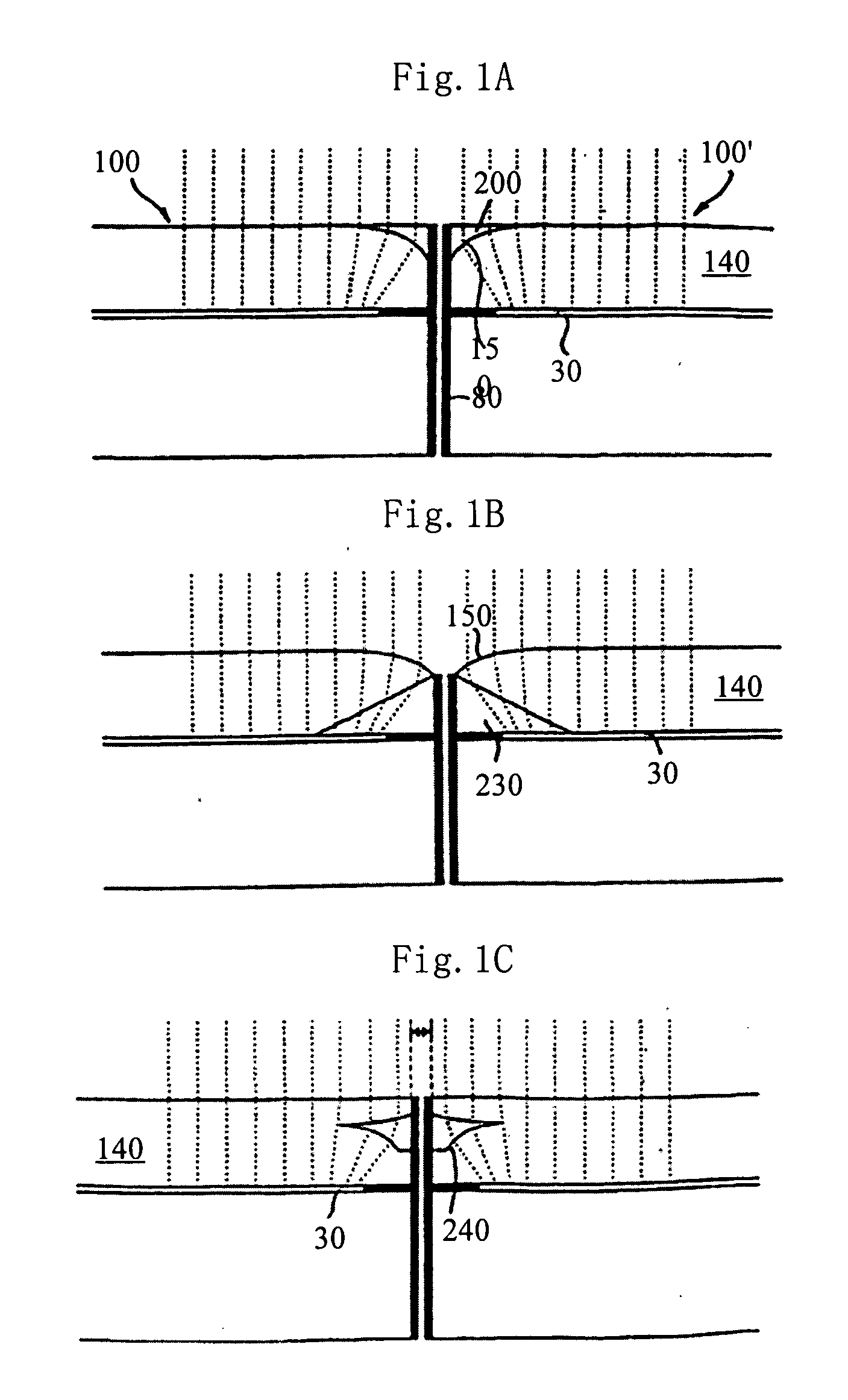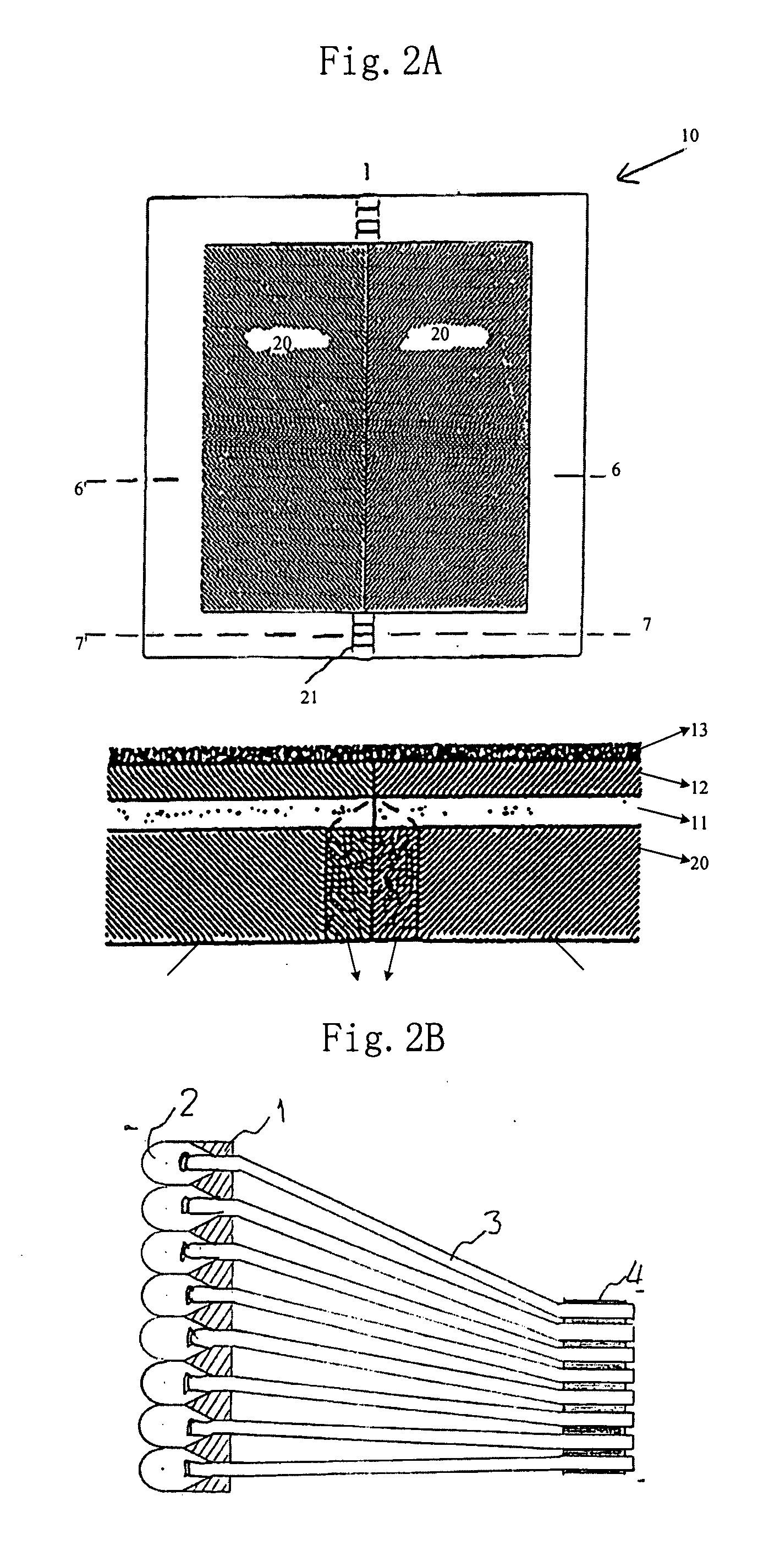Method and Apparatus for Eliminating Seam Between Adjoined Screens
a technology of adjoined screens and seams, applied in the field of image display, can solve the problems of reducing screen size, difficult for users to gain a clear view of a reduced size screen, and unable to meet the requirements of display quality, so as to achieve no damage to image quality, no adverse effect on the portability of the device, and the effect of completely eliminating the seam
- Summary
- Abstract
- Description
- Claims
- Application Information
AI Technical Summary
Benefits of technology
Problems solved by technology
Method used
Image
Examples
first embodiment
The First Embodiment
[0086](1) The Specific Process in Step 301
[0087]Considering the case of only adjoining two screen in the first embodiment of the present invention, fiber means is provided as shown in FIG. 4, and tilted fiber in this means are used to translate a respective image displayed on each of the screens to the position of the seam. In this embodiment, Step 301 includes:
[0088]Step 3011: determining the number of fibers in the fiber means. Specifically, the whole image displayed on the two screens is divided pixel by pixel and each of the pixels is acquired by a corresponding fiber in the fiber means. Therefore, the number of the fibers in the fiber means is determined by providing the fibers in such a manner that each of the fibers corresponds to one ore more pixels to be transmitted via the fiber. In other embodiments of the present invention, one pixel can be transmitted via several corresponding fibers, and the number of the fibers in the fiber means can be determined ...
second embodiment
The Second Embodiment
[0096]The first embodiment realizes only the elimination of a seam between two screens. Referring to FIG. 6, in the second embodiment, the interval between two pixels is extended through a fiber, and the image obtained after this extension can cover a seam among a plurality of screens. As a result, the seam is eliminated during the process of adjoining the plurality of screens.
[0097](1) The Specific Process in Step 301
[0098]Step 301a: determining the number of fibers in fiber means in the same manner as that described in the above step 3011;
[0099]Step 301b: determining the size of the seam among the screens, and extending the interval between the second ends of the fibers in the fiber means based on the determined size of the seam, so the image transmitted via the fiber means can cover the seam.
[0100]Referring to FIG. 7, a corresponding pixel of an image is acquired by the first end of each of the tilted fibers and then transmitted to the second end of the fiber...
third embodiment
The Third Embodiment
[0112](1) The Specific Process in Step 1001
[0113]In order to achieve a better effect for image translation, in Step 1001, the whole image is divided by a dividing unit that is the sectional shape of the incident end of a translation unit in the optical element. As a result, the parts of the divided image each have approximately the same size as that of the incident end of the translation unit, and the translation unit in the optical element can obtain sufficiently corresponding part of the divided image, thereby improving the translation quality.
[0114]Referring to FIG. 11A to 11D, an original image is shown in FIG. 11A. If the incident end of the translation unit has a bar shape, the original image can be divided into bars as shown in FIG. 11B; if the incident end of the translation unit has a square shape, the original image can be divided into squares as shown in FIG. 11C; if the incident end of the translation unit has a circular shape, the original image can ...
PUM
 Login to View More
Login to View More Abstract
Description
Claims
Application Information
 Login to View More
Login to View More - R&D
- Intellectual Property
- Life Sciences
- Materials
- Tech Scout
- Unparalleled Data Quality
- Higher Quality Content
- 60% Fewer Hallucinations
Browse by: Latest US Patents, China's latest patents, Technical Efficacy Thesaurus, Application Domain, Technology Topic, Popular Technical Reports.
© 2025 PatSnap. All rights reserved.Legal|Privacy policy|Modern Slavery Act Transparency Statement|Sitemap|About US| Contact US: help@patsnap.com



